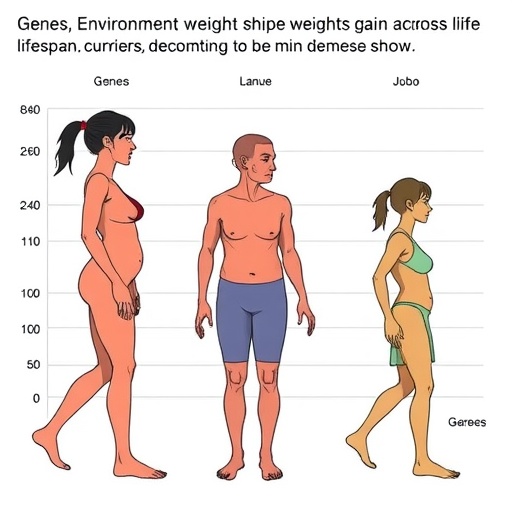
A recent study published in a prestigious scientific journal has ignited a critical discussion surrounding the implications of elevated atmospheric CO₂ levels on food security, plant growth, and overall crop quality. This research scrutinizes the increasingly pertinent question of how rising carbon dioxide concentrations, a hallmark of climate change, affect our crops, our food systems, and thus, our very way of life. The increasing rates of CO₂ in our atmosphere compel us to understand these effects if we aim to ensure food stability for future generations, especially in a warming world.
At the outset, it’s essential to acknowledge that the relationship between CO₂ levels and plant growth is complex. While increased CO₂ can catalyze certain positive responses in C3 plant species—those most common in cooler climates—it is important to consider the broader context of such changes. A notable benefit is the stimulation of photosynthesis, which can lead to enhanced dry matter yield and increased grain production in C3 crops. This phenomenon occurs because heightened CO₂ concentration can improve the efficiency of photosynthetic processes, allowing plants to convert what they ‘inhale’ into usable organic materials more effectively.
Leguminous plants present a unique case within these dynamics. Increased atmospheric CO₂ has been shown to enhance the nitrogen-fixing ability of legumes. This is significant because it can reduce the reliance on synthetic fertilizers, ultimately benefiting agricultural practices and promoting sustainability. In terms of agriculture, fostering the growth of leguminous plants not only improves crop yields but also contributes to healthier soil ecosystems. Enhancing soil fertility through natural means offers a potential pathway toward alleviating some environmental pressures arising from conventional farming practices.
However, it is paramount to temper this optimism with a clear-eyed understanding of the negative repercussions that accompany elevated CO₂ levels. The study reveals that while C3 plants may initially thrive, their nitrogen content often takes a hit. This is particularly alarming because nitrogen is a critical component for synthesizing proteins and amino acids. For instance, researchers have documented that wheat grain protein content can decrease by approximately 7.4% under conditions of elevated CO₂. Such reductions could have downstream effects on human nutrition, particularly in populations that rely heavily on staple grains.
Moreover, the implications extend beyond protein content. The mineral nutrient profile of crops also suffers in high CO₂ environments. A significant reduction in essential minerals such as phosphorus, sulfur, iron, zinc, copper, and manganese has been observed, particularly in cirop species like rice and maize. This decline points to a looming crisis in food quality, where the very crops designed to sustain human populations become increasingly deficient in vital nutrients. Consider that overall tissue mineral concentrations in C3 plants are projected to diminish by around 8%, an alarming statistic in the face of global efforts to combat malnutrition.
Consequently, the implications for global food security are dire. The projected decrease in grain protein and essential micronutrients could catalyze a public health emergency manifesting as increased rates of protein-calorie malnutrition and micronutrient deficiencies. Populations in nutrient-poor regions, such as parts of Africa, stand to suffer the most severe ramifications. As these health issues compound, they present daunting challenges for policymakers and nutritionists attempting to enhance food security sustainably.
Furthermore, the potential consequences include a surprising shift toward increased rates of obesity and type 2 diabetes. As non-structural carbohydrates rise relatively to their counterparts in cereal crops, consumers could fall prey to diets high in starch. Given this context, the efficacy and safety of our food systems must be reexamined to avoid compounding health crises alongside malnutrition.
In crafting strategies to counteract these negative outcomes, the researchers advocate for several forward-thinking approaches. First and foremost, the identification and cultivation of crop genotypes exhibiting superior biofortification traits can play a crucial role in mitigating nutrient deficiencies. By integrating these resilient varieties into breeding programs, we can potentially enhance the nutritional profile of staple crops, thus bolstering public health outcomes.
Another critical recommendation involves increasing the planting of trees, particularly nitrogen-fixing C3 species. This multifaceted approach not only aids in sequestering CO₂ from the atmosphere but also promises to enhance soil fertility over time. Additionally, reorienting dietary preferences toward more pulse-based foods can lead to lower methane emissions typically associated with livestock and encourage better nutrition due to the remarkable nitrogen-fixing capacities of legumes.
The researchers also emphasize the urgent need for more extensive and deeper research. Future investigations should focus on understanding the physiological and molecular responses of C3 plants to elevated CO₂, unraveling the complex metabolites that contribute to plant growth under these changing conditions. By embracing such knowledge, we may discover new pathways to enhance crop resilience amid shifting climate scenarios.
Furthermore, harnessing cutting-edge technology such as artificial intelligence in plant breeding could yield significant advancements. By employing data analytics and machine learning, scientists can develop crop varieties that are not only resilient to the challenges posed by climate change but also possess improved nutritional quality, ensuring that future food production can meet the evolving demands of a growing global population.
In summary, the intricate relationship between elevated atmospheric CO₂ levels and their effects on food security, plant growth, and crop quality is more critical than ever. As we navigate the climate crisis, understanding these dynamics will be essential to crafting innovative solutions that nourish both our global population and the earth’s ecosystems. Only by addressing these challenges head-on can we secure a sustainable agricultural future that upholds both human and environmental health.
Subject of Research: Elevated CO₂ Levels and Their Impact on Food Security, Plant Growth, and Crop Quality
Article Title: Exploring the Impacts of Elevated CO2 on Food Security: Nutrient Assimilation, Plant Growth, and Crop Quality
News Publication Date: 26-Dec-2024
Web References: https://doi.org/10.1016/j.eng.2024.12.018
References: (Not provided in the original content)
Image Credits: Felix D. Dakora et al.
Keywords: Climate change, CO₂ effects on plants, food security, C3 plants, nutrient deficiencies, agricultural sustainability, leguminous plants, nitrogen fixation, artificial intelligence in agriculture.
Tags: atmospheric CO2 and crop yieldcarbon dioxide impact on plant growthclimate change and crop nutritionclimate change effects on food supplyeffects of rising CO2 levels on agricultureenhancing crop resilience in a warming worldfood security and crop qualityfuture food stability challengesimplications for global food systemsleguminous plants and CO2 effectsphotosynthesis in C3 plant speciesrelationship between CO2 and agricultural productivity





